(Last updated on 5/23/23)
The Food Nutrition Service has launched a new program that provides help to households with children during extended school closures. The Pandemic EBT benefits program was launched in response to the Coronavirus outbreak. The outbreak has impacted millions of families nationwide.
In this article, you will learn everything you need to know about the Pandemic EBT program including how it works and if you qualify for benefits.
We will also cover:
- P-EBT Program Information
- Qualifications for P-EBT Benefits
- Child Nutrition Program changes due to COVID-19
- P-EBT Frequently Asked Questions
To learn more about P-EBT benefits including how much you will receive, continue reading below.
ALERT: Summer P-EBT Program for 2023 just announced – find out if your state was approved!
About Pandemic EBT (P-EBT)
The Pandemic Electronic Benefits Transfer (P-EBT) program was authorized by the Families First Coronavirus Response Act (FFCRA). The program provides financial assistance to families with children that typically receive free or reduced-price school meals.
The goal of the program is to reduce the financial strain on low-income households caused by extended school closures during COVID-19.
Pandemic EBT is in line with USDA’s commitment to keeping Americans safe, secure, and healthy. In addition, the program keeps kids fed when schools are closed during a national emergency.
To learn more about Pandemic EBT benefits and to find out if you qualify, continue reading below.
What is Pandemic EBT?
Pandemic EBT is a supplemental food purchasing benefit to offset the cost of meals that would have otherwise been consumed at school.
The Food and Nutrition Service is allowing states to provide benefits (similar to SNAP or “food stamps”) to children who normally receive free or reduced-price school meals.
What states are approved for Pandemic EBT?
Currently, Pandemic EBT benefits are approved for households in these states:
- Alabama
- Alaska
- Arizona
- Arkansas
- California
- Colorado
- Connecticut
- Delaware
- District of Columbia
- Florida
- Georgia
- Hawaii
- Illinois
- Indiana
- Kansas
- Kentucky
- Louisiana
- Maine
- Maryland
- Massachusetts
- Michigan
- Minnesota
- Mississippi
- Missouri
- Montana
- Nebraska
- Nevada
- New Hampshire
- New Jersey
- New Mexico
- New York
- North Carolina
- North Dakota
- Ohio
- Oklahoma
- Oregon
- Pennsylvania
- Rhode Island
- South Carolina
- South Dakota
- Tennessee
- Texas
- Utah
- Vermont
- Virginia
- Virgin Islands
- Washington
- West Virginia
- Wisconsin
- Wyoming
Will my state be approved for Pandemic EBT?
Whether or not your state is approved for Pandemic EBT solely depends on your local state officials. States can be approved for Pandemic EBT by submitting a plan to the Secretary of Agriculture.
When are Pandemic EBT benefits issued?
Approved states may operate Pandemic EBT when a school is closed for at least five consecutive days during a public health emergency.
Qualifications for P-EBT Benefits
If you are wondering if your household qualifies to receive P-EBT benefits, we can help. Find a complete list of qualifications for P-EBT below.
Your household may be eligible for P-EBT benefits if your child or children are:
- Currently enrolled and receiving free or reduced-price school meals, or
- Attending a school that participates in CEP (Provision 2 or 3), and
- Schools have been closed for 5 consecutive days for a public health emergency.
How much will I receive in P-EBT benefits?
P-EBT benefits will be provided for each eligible child in your household equal to the daily reimbursement for free breakfast and lunch at $5.70. The daily reimbursement ($5.70) will then be multiplied by the average number of school days canceled in the month.
P-EBT benefits are deposited monthly to an EBT Card.
How long will I receive P-EBT benefits?
The time period in which you will receive P-EBT benefits varies by state. Get information about your state’s P-EBT benefits below:
Alabama P-EBT Benefits
Eligible Alabama households in will receive P-EBT benefits for school closures extending from March 18, 2020 through May 29, 2020 – a total of 55 days.
Arkansas P-EBT Benefits
Eligible Arkansas households in will receive P-EBT benefits for school closures extending from March 13, 2020 through May 31, 2020 – a total of 56 days.
Arizona P-EBT Benefits
Eligible Arizona households in will receive P-EBT benefits for school closures extending from March 16, 2020 through May 29, 2020 – a total of 55 days.
California P-EBT Benefits
California households with eligible students will receive P-EBT benefits for school closures extending from March 16, 2020 through June 12, 2020 – a total of 64 days.
For more information on California P-EBT, check out our CA P-EBT Benefits Guide.
Colorado P-EBT Benefits
Colorado households with eligible students will receive P-EBT benefits for school closures extending from March 16, 2020 through May 25, 2020 – a total of 49 days.
Connecticut P-EBT Benefits
Connecticut households with eligible students will receive P-EBT benefits for school closures extending from March 17, 2020 through May 20, 2020 – a total of 47 days.
Delaware P-EBT Benefits
Delaware households with eligible students will receive P-EBT benefits for school closures extending from March 16, 2020 through June 12, 2020 – a total of 65 days.
District of Columbia P-EBT Benefits
Washington, DC households with eligible students will receive P-EBT benefits for school closures extending from March 18, 2020 through June 19, 2020 – a total of 68 days.
Florida P-EBT Benefits
Florida will issue P-EBT benefits to eligible households with students for school closures extending from March 16, 2020 through May 29, 2020 – a total of 55 days.
For more information on Florida P-EBT, check out our FL P-EBT Benefits Guide.
Hawaii P-EBT Benefits
Hawaii will issue P-EBT benefits to eligible households with students for school closures extending from March 16, 2020 through May 28, 2020 – a total of 54 days.
Illinois P-EBT Benefits
Illinois will issue P-EBT benefits to eligible households for school closures extending from March 17, 2020 through April 30, 2020 – a total of 32 days.
The State will issue additional benefits for any canceled school days after April 30, 2020.
Indiana P-EBT Benefits
Indiana will issue P-EBT benefits to eligible households with students for school closures extending from March 13, 2020 through May 29, 2020 – a total of 56 days.
Kansas P-EBT Benefits
Kansas will issue P-EBT benefits to eligible households for school closures extending from March 18, 2020 through May 31, 2020 – a total of 51 days.
Kentucky P-EBT Benefits
Kentucky will issue P-EBT benefits to eligible households for school closures extending from March 16, 2020 through May 31, 2020 – a total of 55 days.
For more information on Kentucky P-EBT, check out our KY P-EBT Benefits Guide.
Louisiana P-EBT Benefits
Louisiana will issue P-EBT benefits to eligible households for school closures extending from March 16, 2020 through May 22, 2020 – a total of 50 days.
For more information on Louisiana P-EBT, check out our LA P-EBT Benefits Guide.
Maine P-EBT Benefits
Maine will issue P-EBT benefits to households with students for school closures extending from March 16, 2020 through June 18, 2020 – a total of 67 days.
Maryland P-EBT Benefits
Maryland households with eligible students can receive P-EBT benefits for school closures extending from March 16, 2020 through May 15, 2020 – a total of 44 days.
The State will issue additional benefits for canceled school days if schools remain
closed beyond May 15, 2020.
Massachusetts P-EBT Benefits
Eligible Massachusetts households in will receive P-EBT benefits for school closures extending from March 16, 2020 through May 1, 2020 – a total of 35 days.
States will issue additional benefits for canceled school days if schools remain closed beyond May 1, 2020.
Michigan P-EBT Benefits
In Michigan, P-EBT currently states that eligible households in will receive benefits for school closures extending from March 16, 2020 through June 15 – a total of 66 days.
Minnesota P-EBT Benefits
Minnesota households with eligible students can receive P-EBT benefits for school closures extending from March 18, 2020 through June 4, 2020 – a total of 57 days.
Missouri P-EBT Benefits
Missouri households with eligible students can receive P-EBT benefits for school closures extending from March 18, 2020 through May 31, 2020 – a total of 53 days.
New Hampshire P-EBT Benefits
New Hampshire households with eligible students can receive P-EBT benefits for school closures extending from March 16, 2020 through June 15, 2020 – a total of 66 days.
New Jersey P-EBT Benefits
In New Jersey, P-EBT currently states that eligible households in will receive benefits for school closures extending from m March 18, 2020 through June 19 – a total of 73 days.
New Mexico P-EBT Benefits
In New Mexico, P-EBT currently states that eligible households in will receive benefits for school closures extending from March 16, 2020 through June 19, 2020 – a total of 70 days.
New York P-EBT Benefits
In New York, P-EBT currently states that eligible households in will receive benefits for school closures extending from March 16, 2020 through June 25, 2020 – a total of 74
days.
North Carolina P-EBT Benefits
North Carolina will issue P-EBT benefits to eligible households for school closures extending from March 16, 2020 through June 12, 2020 – a total of 65 days.
For more information on North Carolina P-EBT, check out our NC P-EBT Benefits Guide.
North Dakota P-EBT Benefits
North Dakota will issue P-EBT benefits to eligible households for school closures extending from March 16, 2020 through May 26, 2020 – a total of 48 days.
Ohio P-EBT Benefits
Ohio will issue P-EBT benefits to eligible households for school closures extending from March 17, 2020 through May 29, 2020 – a total of 53 days.
Oregon P-EBT Benefits
Oregon will issue P-EBT benefits to eligible households for school closures extending from March 16, 2020 through June 16, 2020 – a total of 67 days.
Pennsylvania P-EBT Benefits
In Pennsylvania, P-EBT currently states that eligible households in will receive benefits for school closures extending from March 16 through June 12, 2020 – a total of 65 days.
Rhode Island P-EBT Benefits
Rhode Island will issue P-EBT benefits to eligible households for school closures extending from March 16, 2020 through April 30, 2020 – a total of 34 days.
The State will issue additional benefits for any canceled school days in May and June.
Tennessee P-EBT Benefits
In Tennessee, P-EBT currently states that eligible households in will receive benefits for school closures extending from March 23, 2020 through May 22, 2020 – for a total of 44 days.
Texas P-EBT Benefits
In Texas, P-EBT states that households with eligible students will receive benefits for school closures extending from March 20, 2020 through May 29, 2020 – a total of 50 days.
Vermont P-EBT Benefits
In Vermont, P-EBT states that households with eligible students will receive benefits for school closures extending from March 18, 2020 through June 19, 2020 – a total of 68 days.
Virginia P-EBT Benefits
Eligible Virginia households in will receive P-EBT benefits for school closures extending from March 13, 2020 through mid-June for a statewide average totaling 65 days.
Washington P-EBT Benefits
Washington households with eligible students will receive P-EBT benefits for school closures extending from March 13, 2020 through June 19, 2020 – a total of 70 days.
West Virginia P-EBT Benefits
Eligible students in West Virginia households will receive P-EBT benefits for school closures extending from March 16, 2020 through May 31, 2020 – a total of 55 days.
Wisconsin P-EBT Benefits
Wisconsin households with eligible students will receive P-EBT benefits for school closures extending from March 18, 2020 through June 5, 2020 – a total of 57 days.
Wyoming P-EBT Benefits
Wyoming households with eligible students will receive P-EBT benefits for school closures extending from March 16, 2020 through May 25, 2020 – a total of 50 days.
Child Nutrition Program changes due to COVID-19
The Coronavirus pandemic has caused numerous changes to the Child Nutrition Assistance programs. This is an effort to better serve low-income households facing increased financial stress due to COVID-19.
Those changes include:
- Allowing parents and guardians to pick-up meals to bring home to their kids
- Waiving meal times requirements so multiple days of meals can be picked-up
- Allowing meals to be delivered or served in non-congregate settings
- Waiving the requirement for after school snacks to include educational activities
- Allowing states to serve free meals to children in all areas, versus only the areas where at least half of the students receive free or reduced-price meals
- Launching a new Coronavirus webpage that informs the public about new changes to keep children and families fed during the crisis
- Providing more than one million meals a week through Meals to You
- Increasing access to online grocery purchasing pilot for EBT cardholders
- Launching the “Meals for Kids” website to help families while schools are closed
- Allowing states to issue Emergency Supplemental SNAP benefits
- Collecting solutions to feeding children impacted through [email protected]
- Providing administrative flexibility in SNAP and WIC related to applications, renewals, and requirements
Pandemic EBT FAQs
For answers to some of your most frequently asked questions about P-EBT, continue reading below.
Who qualifies for Pandemic EBT?
Current SNAP participants and new EBT eligible households with children that qualify for free or reduced-price school lunches through the Richard B. Russell National School Lunch Act can receive Pandemic EBT benefits.
Are children receiving school meals through the CEP eligible for Pandemic EBT?
Yes, all children who receive free or reduced-price meals are eligible to receive P-EBT. Students attending schools that participate in CEP (Provision 2 or 3) are also eligible to receive P-EBT.
Do households need to submit an application for P-EBT?
No, households do not need to submit an application to receive P-EBT benefits. States will provide P-EBT benefits to SNAP and non-SNAP households with children that were enrolled in free or reduced-price school meals.
What is the minimum amount I will receive in P-EBT benefits?
The minimum household allotment amount will be no less than the value of the school meals ($5.70) for each eligible child in your household over the 5-day period.
For example, this means if you have two eligible children and 5 consecutive days of closed school, you will receive a total of $57 in P-EBT benefits ($5.70 x 5 x 2)
How do non-SNAP households get P-EBT benefits?
A non-SNAP household will need to provide household information to receive P-EBT benefits. You must provide this information to the state agency:
- Name and signature of the head of household
- Number and names of eligible children in the household
- Address of household on record with the school district
- Mailing address (if different from the one provided above)
How will I get my P-EBT benefits if I don’t have an EBT Card?
Your state agency will send you an EBT Card mail. You must provide your local state agency with information prior to receiving your EBT Card and P-EBT benefits.
Pandemic EBT Benefits
We hope this post about the new P-EBT program was helpful to you. If you have additional questions about the Pandemic EBT program, please let us know in the comments section below.
For more information and resources regarding the Coronavirus pandemic, check out our articles below:
Additional Food Stamps Benefits due to Coronavirus
Millions of Americans Approved for Food Stamps due to Coronavirus
Families First Coronavirus Response Act provides relief to Low-Income Americans

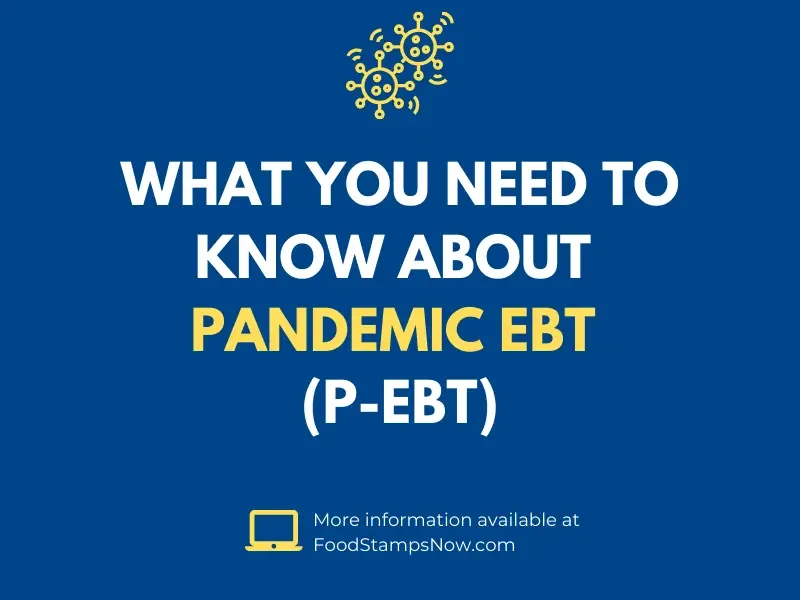

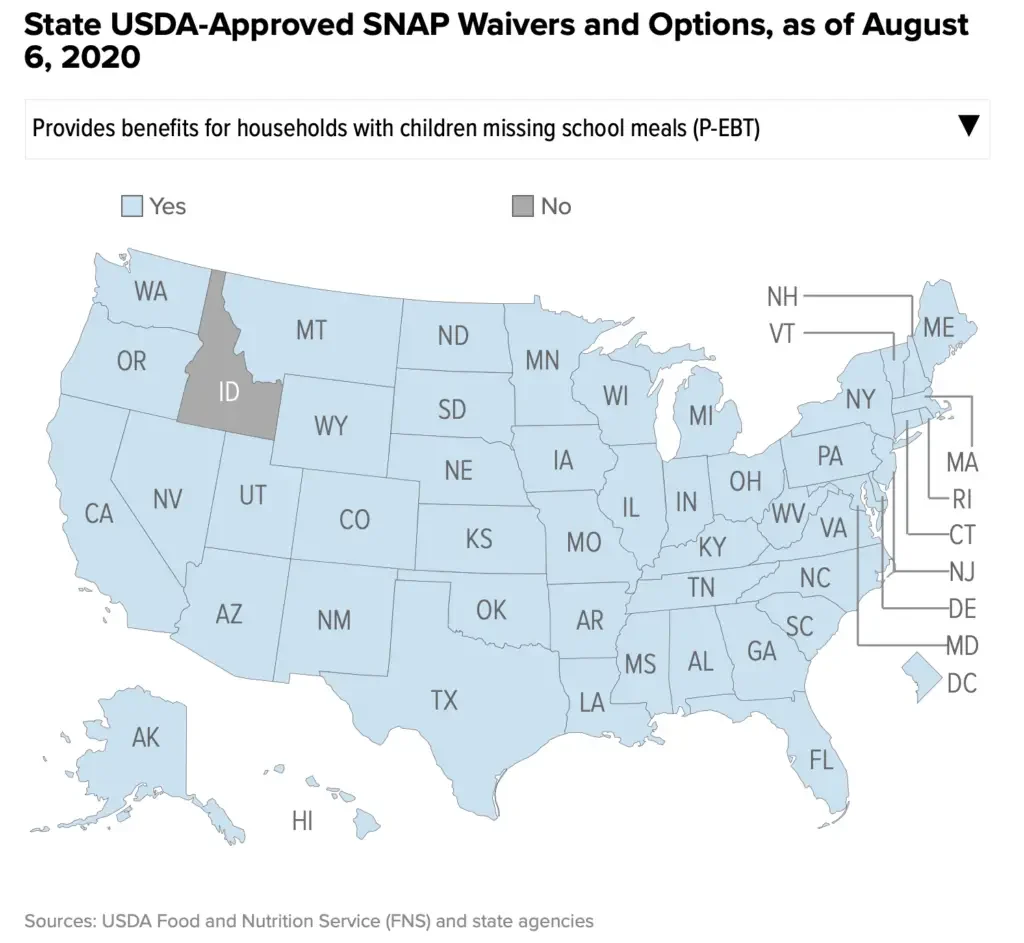
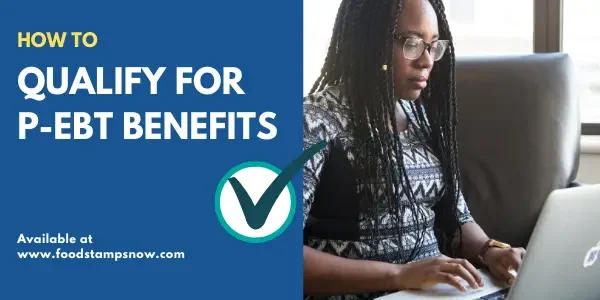

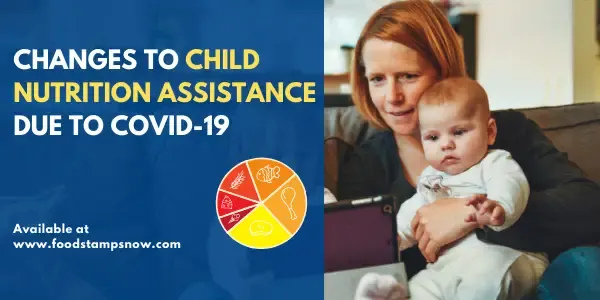
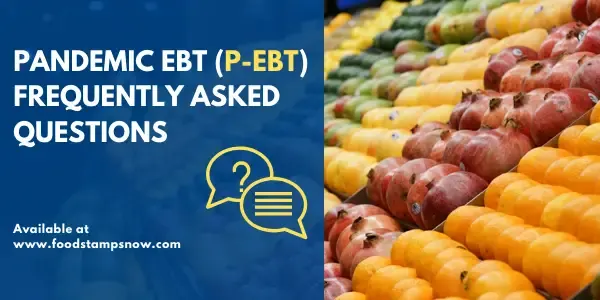
Kathleen lynch
Wednesday 22nd of April 2020
Can my son buy my groceries with me ebt card. I am 66 with heart disease.
Natasha Johnson
Wednesday 13th of May 2020
yes, anyone can purchase groceries for you if you are unable to do so yourself due to an illness or accident, they will just need your personal PIN and the card
Michael Todd Nunez
Wednesday 22nd of April 2020
I have a plied for almost over a month to get Snap food stamps Not heard a response back did not get a code number at the end of my application Michael Todd Nunez